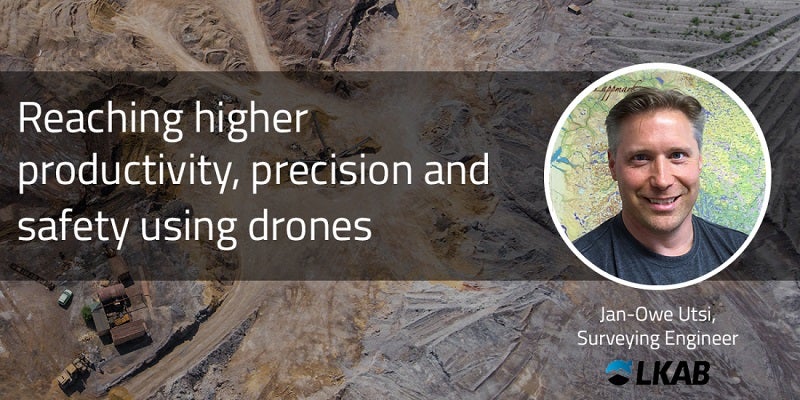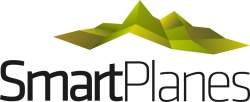
Drones play an important role at the Swedish mining company LKAB, which is located in Northern Sweden. Drones are primarily used to find extractions for outbreaks, but also for mapping slog ponds, which constantly need to be re-established or expanded. The drones give LKAB important information on how to manage this in the best way possible.
This is a very busy time for the company, but we managed to get a quick chat with one of their surveying engineers, Jan-Owe Utsi, regarding how LKAB use drones in their mining operations.
Collecting important information by means of drones
As mining operations inevitably affect the landscape, LKAB always assess the potential environmental impact and seek permission from the authorities before taking any action. Here, the drones are used in order to collect important information, which can then be used in assessments and in the quest for permission.
Having full control over extractions is critical for several reasons. For instance, the mine may be on land owned by someone else and then the extractions must be reported to the landowner. Also ,to ensure that LKAB acts in accordance with laws and regulations, authorities require information about the size of the extractions. Finally, LKAB needs control in order to make sure they are in line with their own business goals and for this they are dependant on information gathered by the drones.
Scanning 11,000 soccer fields every season
At present, LKAB has two SmartPlanes Freya drones in operation. Both drones have been upgraded with post-processed kinematic (PPK) capabilities, meaning they get an extremely high-measurement accuracy, even without ground control targets.
LKAB uses drones in their operations from June to October, hence the season is short but intense. During one season, they scan an area of 60-70km², which corresponds to approximately 11,000 soccer fields. This amounts to 110 soccer fields a day, five days a week, during 20 weeks in total. The high intensity combined with a very harsh environment demands very high standards from the drone regarding reliability, efficiency and adverse weather capabilities.
"Without our drones, we would need to bring in lots of manpower to measure using traditional methods. That seems unthinkable to us today," says Utsi.
No need to put people’s safety at risk
Before LKAB started using drones, surveying engineers were exposed to major risks as they balanced on the edge of the quarries using manual measuring methods. One tiny misstep could cause them to fall to their death. Today, they can undertake more projects without putting people’s safety at risk.
"Now our work is much more safe and additionally, the result is more accurate than when we measured the traditional way," says Utsi.
Utsi further explains that as with all new technologies, it is important to stay up-to-date and to make sure you do not fall behind. As there is a constant development of flight planning and post-processing software, Utsi and his colleagues put much time and effort on ensuring that they stay updated.
The process
The whole mining area is located within the flight zone of Kiruna Airport. The surveying engineers at LKAB therefore have daily contact with the flight control tower, in order to ensure they fly safely and to be able to share airspace with other air traffic.
Utsi describes this process as follows: "First, we get an order from an internal department. Thereafter we draw a map and define an air route. Before we fly, we contact flight control at Kiruna Airport to make sure we are good to go. When the drone is up in the air, there is no involvement needed from our side – the drone flies and lands all on its own. After the flight, we upload the data into the Pix4D software for post-processing. Here we get pictures and point clouds which in turn can be uploaded to another software called Geo. In Geo we can compare point clouds from different dates and get information about differences in volume."
To summarise, drones have opened up new opportunities for LKAB when it comes to effectivising their operations.
"Thanks to SmartPlanes Freya, we are able to save money and above all, our work has become much safer. There is no way back now," Utsi concludes.

